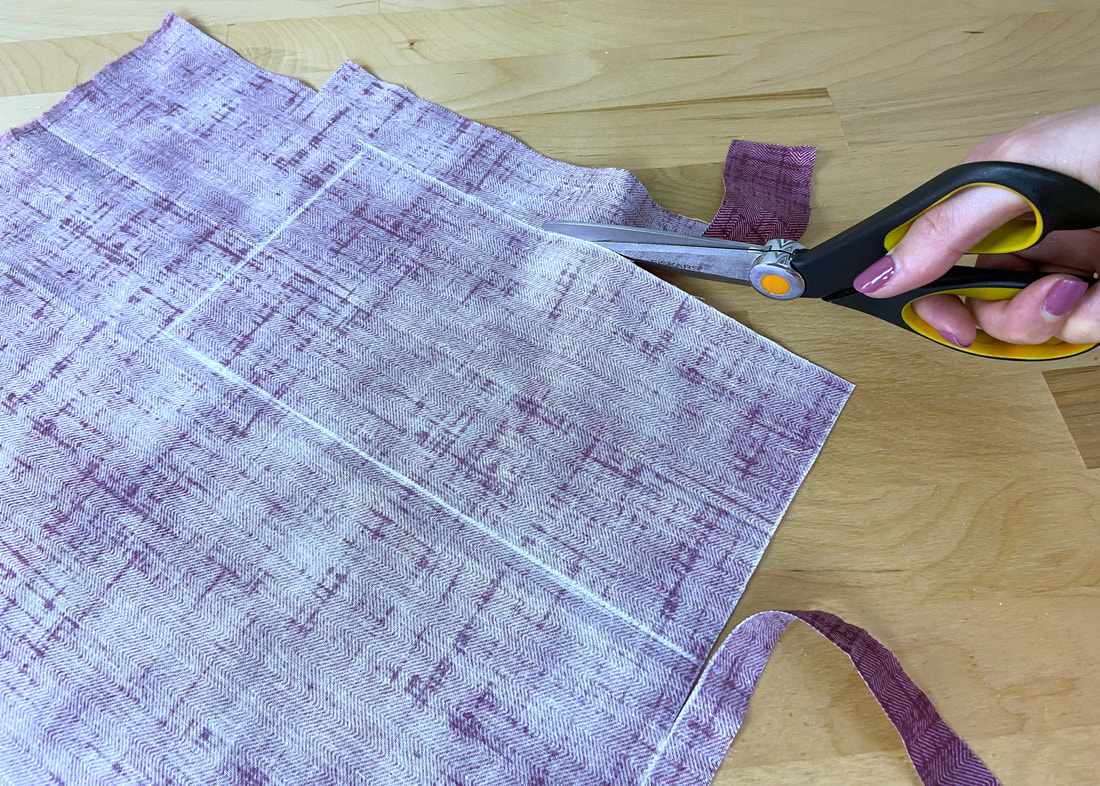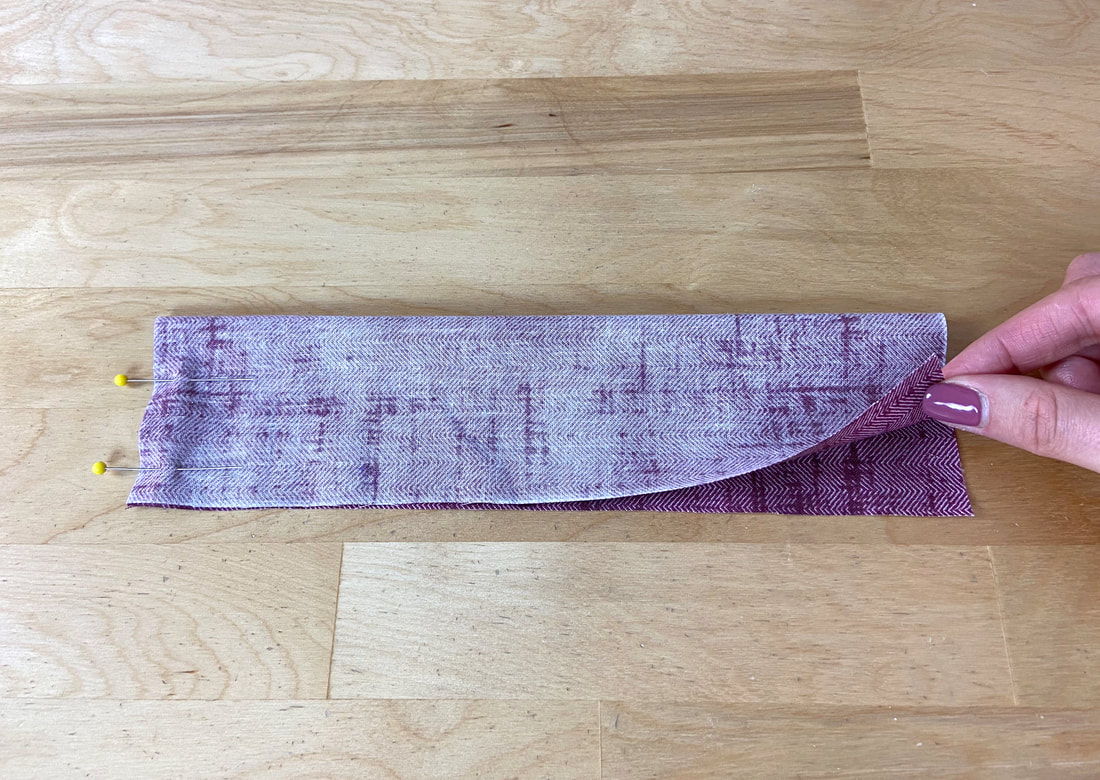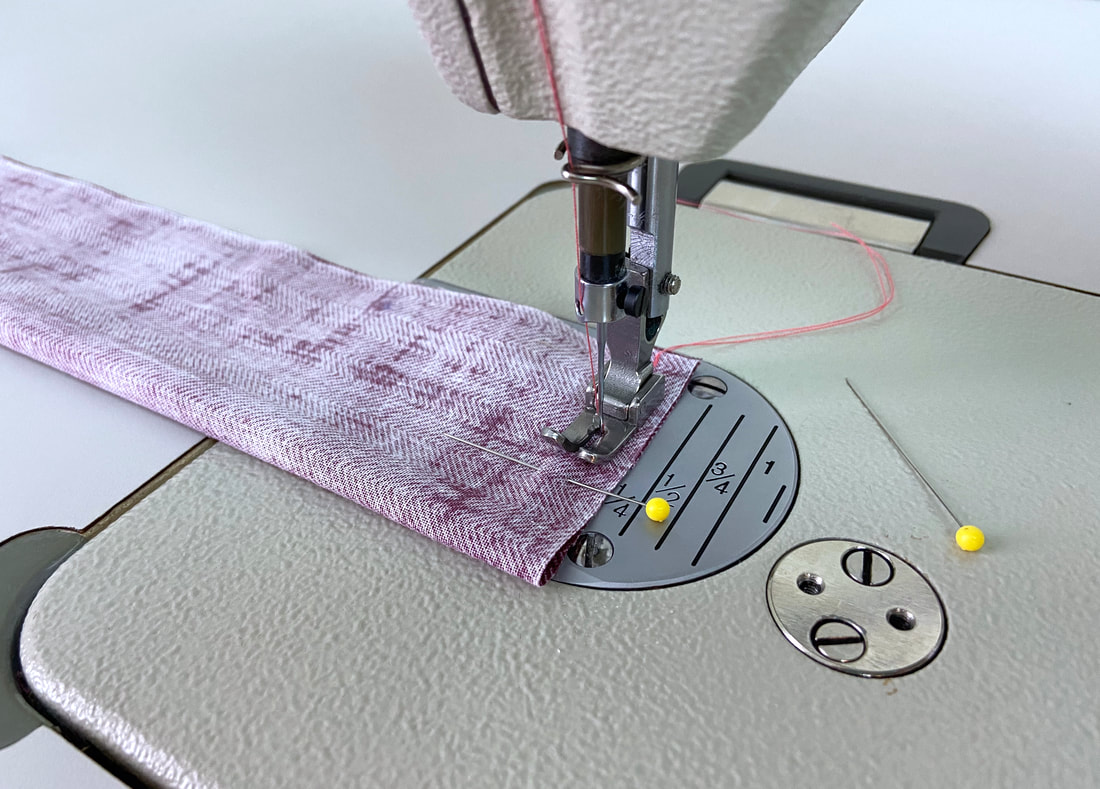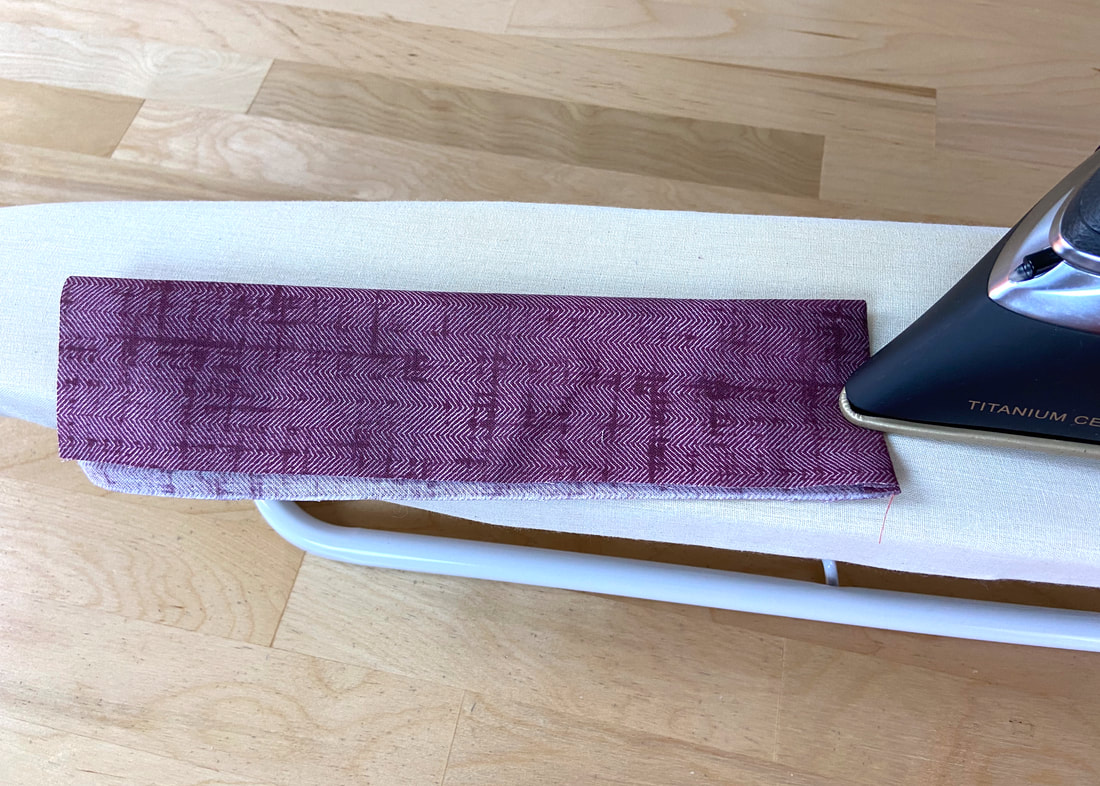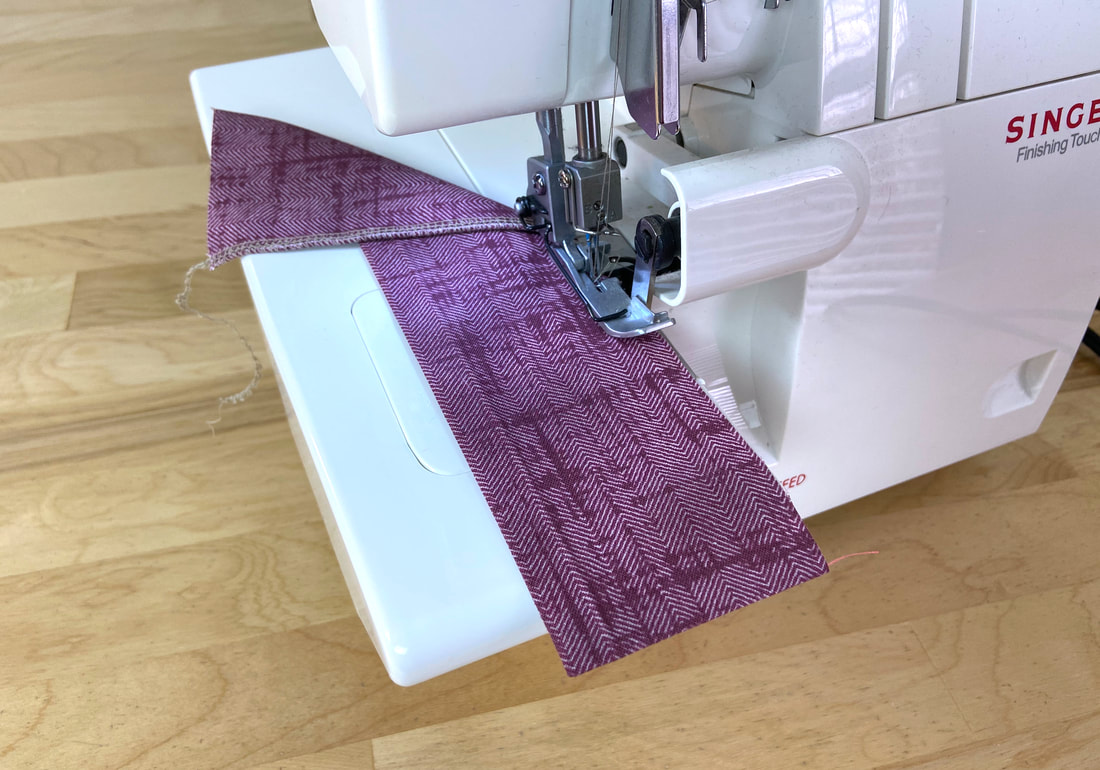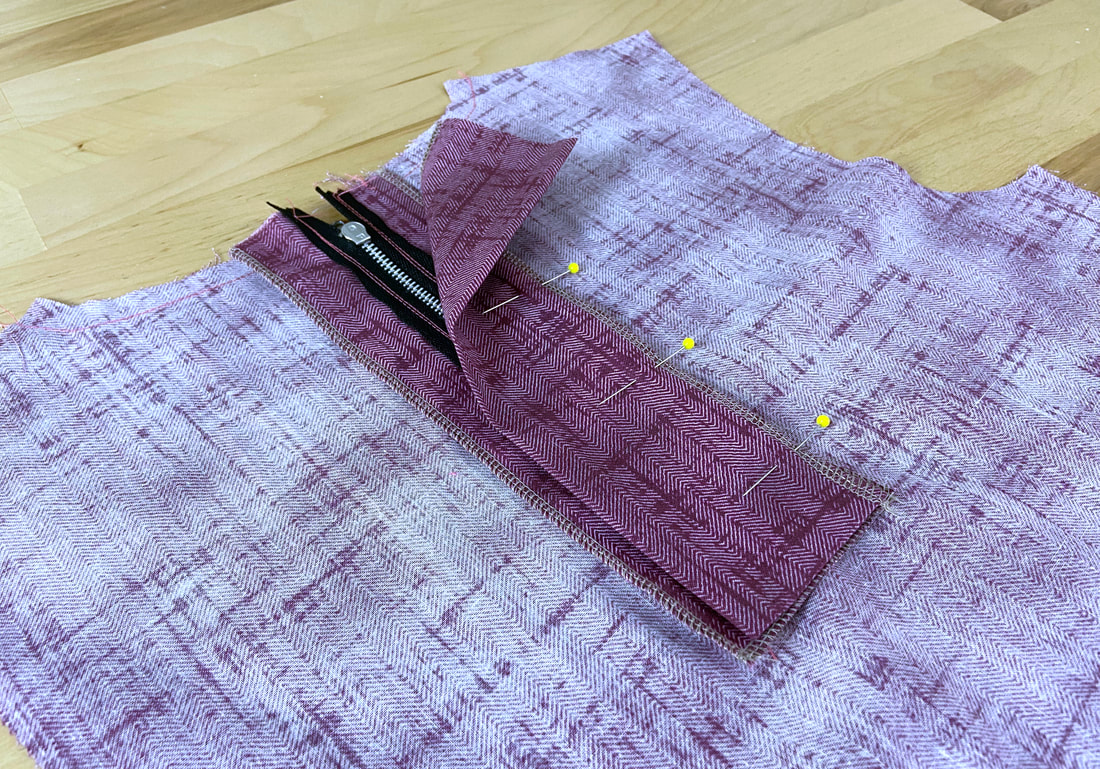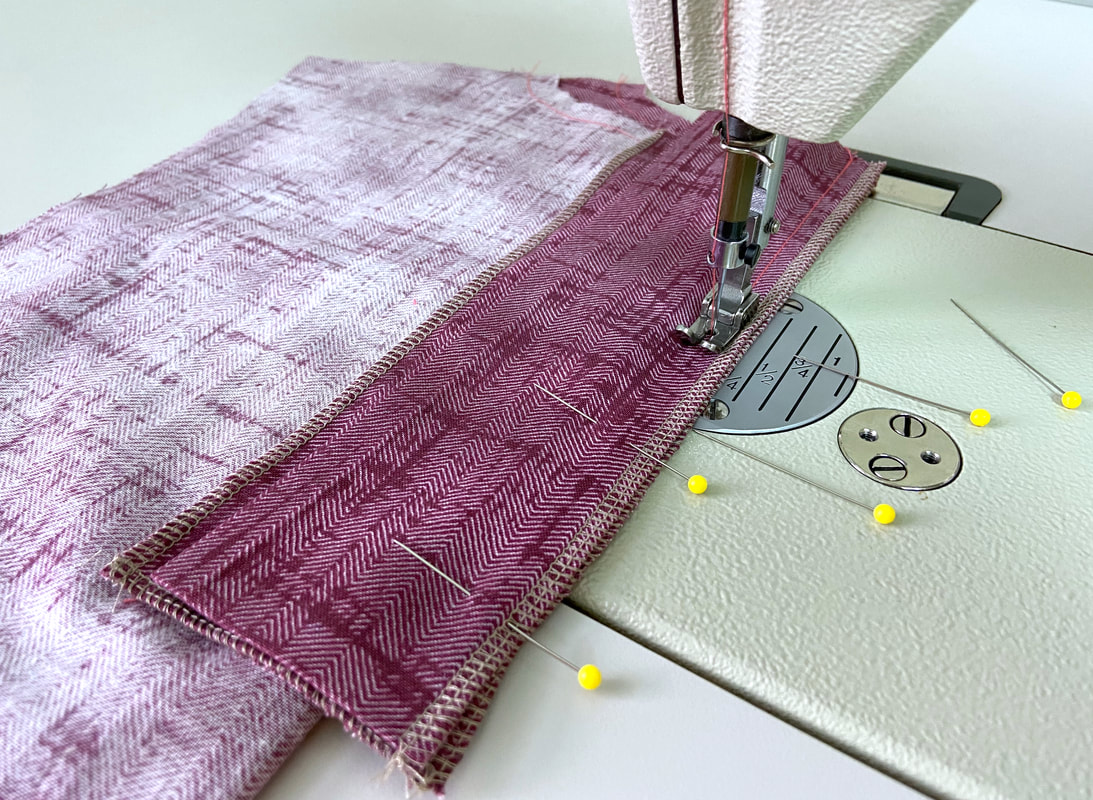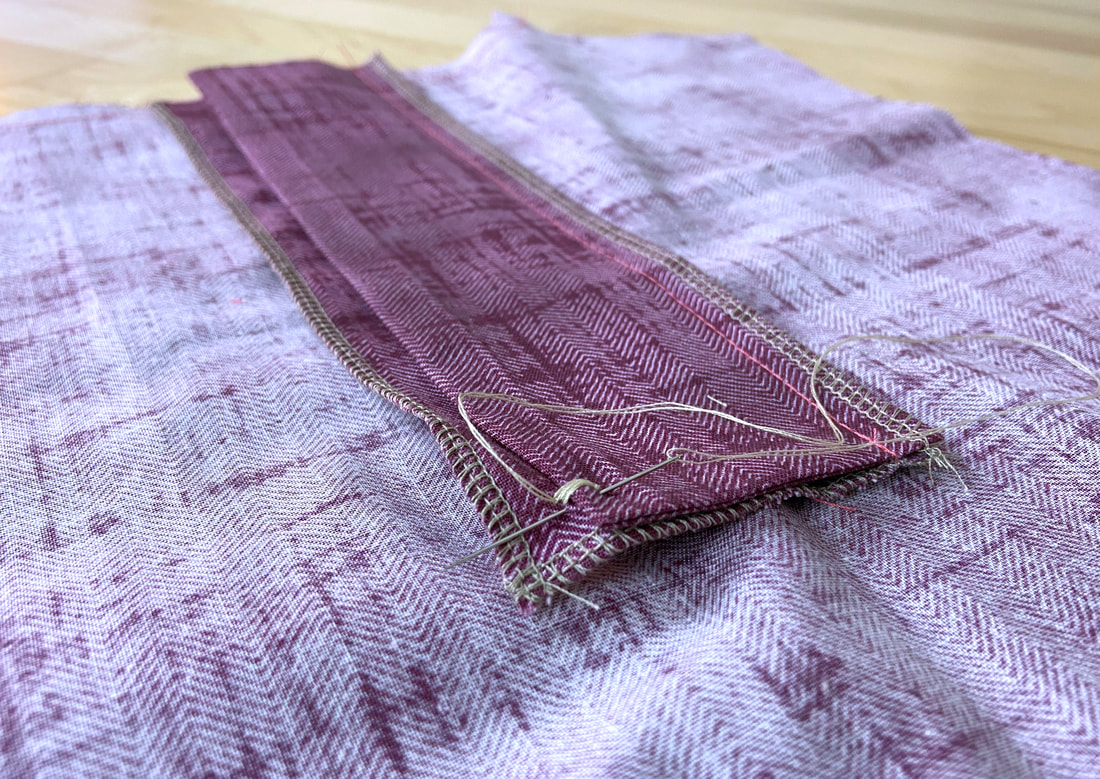Mini Tutorial: How To Sew A Self-Finished Zipper Underlay
A self-finished technique is the simplest way to sew a conventional zipper underlay. This underlay style is constructed from a single fabric layer that simply folds onto itself to enclose its raw edges.
1. Measure and mark the rectangular fabric strip directly on the wrong side of the fabric. This rectangle should be at least 1" longer than the zipper length and double the width of the final (desired) underlay. Since the finished underlay covers the zipper entirely, it conventionally measures 2"-3" in width. In this case, the initial fabric strip is cut at 6" wide.
Once marked, carefully cut along the tailor chalk/pencil lines.
Once marked, carefully cut along the tailor chalk/pencil lines.
2. Fold the fabric strip lengthwise with face sides touching and all edges aligning. Insert pins through the horizontal edge corresponding to the underlay's bottom edge.
3. Stitch the pinned horizontal edge at 1/4" seam allowance. Flip the underlay on its right side and iron the self-enclosed edge for a smooth, flat finish.
4. Clean-finish the underlay's vertical raw edges using the technique of your choice. In this case, a serging stitch is used to encase the two edges together simultaneously. As an alternative, you can use a zigzag stitch which is available on all home sewing machine.
5. Place the underlay on the wrong side of the zipper application such that it covers the entire zipper length. Align the underlay's vertical clean-finished edge with the zipper's seam allowance (or facing edge) as shown above. Insert pins horizontally through both layers to secure.
Note: It may help to move the garment layers completely out of the way in the process so you can comfortably pin through the seam allowance and underlay edges only.
Note: It may help to move the garment layers completely out of the way in the process so you can comfortably pin through the seam allowance and underlay edges only.
6. Machine stitch the pinned edges together halfway down the seam allowance.
7. Top complete the application, tack the underlay's bottom open corner to the opposite seam allowance (or facing edge) using a hand-applied whipstitch as pictured above. This stitch should only be applied on the wrong side of the zipper application and not visible on the garment's face side.

